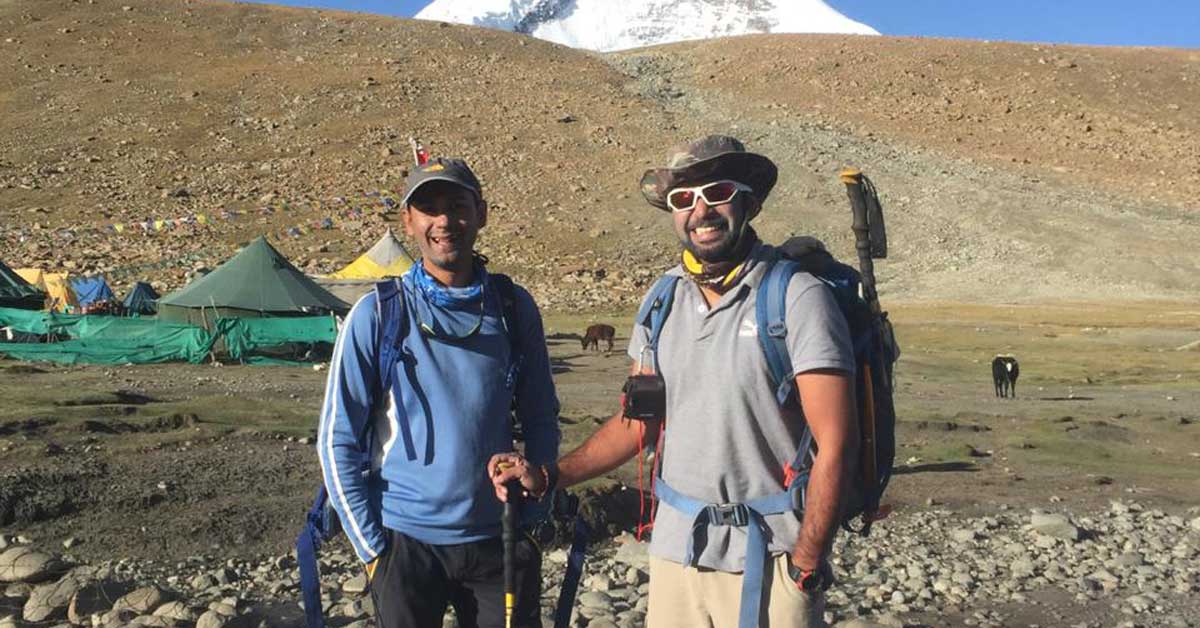
Having climbed in Ladakh since 2010, I believed that I had attempted every peak, this incredible region had to offer. I was, therefore, surprised when we stumbled on DZO JONGO, the hidden 6000-meter climbing peak of Ladakh.
It was September of 2017 and as part of Adventure Pulse, Samir and I were going to lead a big group of climbing enthusiasts to the top of Stok Kangri. However, like every other time, both of us always looked for an excuse to spend extra time in Ladakh and so we had signed up for the famous Ladakh marathon. This would give us a few extra days in Leh, as well as help us acclimatize well to guide clients up a 6000-meter peak.
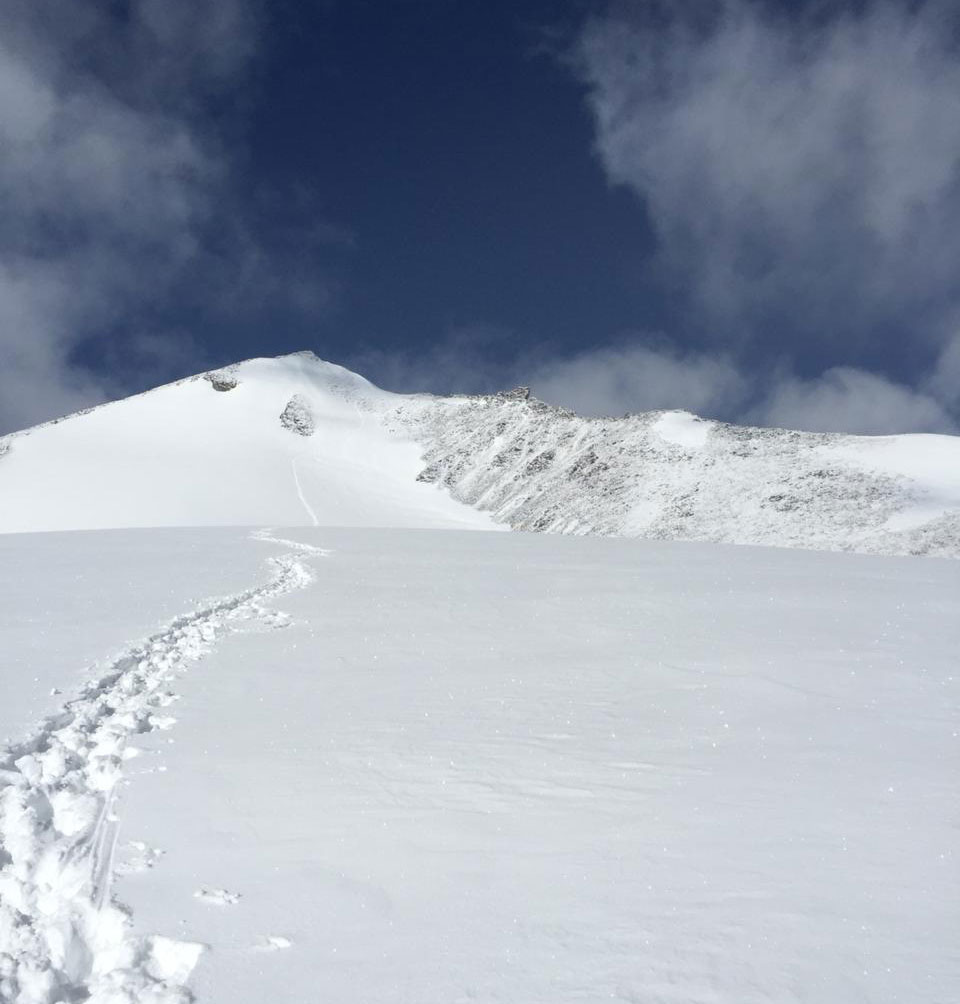
We trained hard and arrived in Leh a week in advance to the marathon. The beauty of this place always leaves me breathless, completely mesmerizing me. Even after 20 + trips to Ladakh, I always fall in love with the unique landscape and these mountains, over and over again. I keep telling my friends, that Ladakh is my favourite place in the world.
We were back from an unsuccessful attempt on Everest in early June and turning back 800 meters from the Summit of Everest was haunting us. We could not wait to get to the mountains and climb again. Even though we had climbed Stok Kangri many times before, we were looking forward to it.
On day one of our arrival in Leh, we started reminiscing over our days on Everest and felt like going back to the mountains as soon as we could. Even the one week wait for the Leh marathon seemed unreasonable with the allure of the mountains so close. It felt like the mountains had taken control, beckoning us. We soon began discussing the possibility of climbing a mountain in this one week, instead of doing a high altitude run.
It took us no more than 10 minutes to take this decision and we shortlisted Kangyatse – II, a mountain located in the Markha valley in Ladakh at a height of 6175 meters. Kangyatse – II had always been part of our climbing list and we thought this is a good opportunity to explore this mountain. Ideally, it would take at least 8-10 days to climb a 6000-meter peak, but we had only 5 days. We knew we had to do an express climb, but considering it was just Samir & me, we were up for the challenge.
We made a few calls to our climbing Sherpa friends who often temporary shift base from Nepal to Ladakh from June – September as its offseason for climbing in Nepal because of the monsoon. We found one of our old climbing Sherpa’s from Nepal and asked him to put a small team together. We would do this fast and with fewer resources, we told him.
Having climbed together in Nepal, he was aligned with our climbing style. He understood the time crunch and got one more assistant Sherpa with him. The goal was clear now – go climb Kangyatse–II and be back in Leh in 5 days, before our clients start arriving for the Stok Kangri climb.
Dzo Jongo Expedition Begins
The regular approach to the Kangyatse Base camp is through the Markha Valley. It starts from Sku and goes through Markha and Thochungtse before reaching Nimaling. But since we were short on time, we decided to directly go over the famous Kongmarula pass at 5260 meters and reach Nimaling in one day.
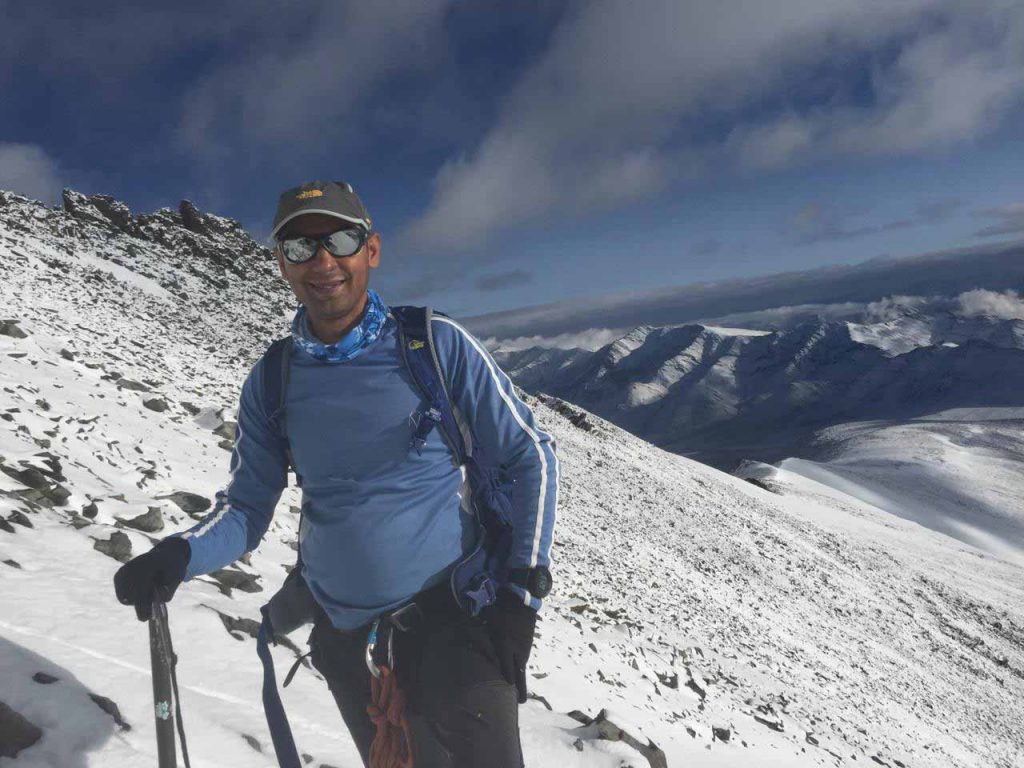
We started from Leh early morning and drove to the starting point of our trek, a small village called Chokdo, located behind the Hemis monastery. We aimed to reach Chuskurmo, below the Kongmarula pass and break for lunch. Depending on the weather, we would either move forward over the pass or camp here overnight.
Going from Leh at 3400 m over the Kongmarula pass at 5260 m in one day is not only ambitious but not advisable. However we were well acclimatized having spent over 2 months on Everest a couple of months back, we were confident of doing this.
I would like to particularly mention here that this was an exception even for us and if not for the lack of time, we would follow the basic principles of acclimatization, which is not to gain more the 300-350 meters ( approx 1000 feet ) in one day.
The attraction of DZO JONGO
We started early from Leh and were on the trail by 10 am. Samir, me and our 2 Sherpa’s having climbed together in the past were well acquainted with each other ‘s pace. Even though we were carrying heavy loads, we got into a good rhythm and were under the Kongmarula pass by late afternoon. We stopped for a quick lunch break and decided to press on.
By 4.30 pm, we were on top of the pass and got our first glimpse of Kangyatse 1, 2, and a couple of more peaks. We immediately inquired with Lakpa about the peak on the left of Kangyatse. He called it Dzo Jongo, a 6200-meter peak, and that not too many people climb it. I looked at Samir and smiled. He knew what was coming. I turned to Lakpa and said, “why don’t we climb it?” He wasn’t very amused by the last-minute change in plan. He said, “Let’s see,” and continued downward towards Nimaling.
Nimaling – The Hub of Markha Valley
Nimaling located on the other side of Kongmarula pass, in the Makha Valley, is a relatively bigger campsite. I like to refer to it as the camping hub of the Markha valley. It’s the culmination of a couple of routes, plus acts as a base camp for climbers attempting Kangyatse and Dzojongo.

After resting for a little while, we walked around Nimaling and realized that 2 – 3 teams are camping there to attempt Kangyatse – II in the next couple of days. This gave us one more reason to go climb Dzo Jongo instead. We sat with Lakpa one more time and asked him the feasibility of doing this. He has always been very co-operative and expressed his concern that he had climbed Dzo Jongo only once, a few years back.
Though he remembered the route vaguely, he was not sure of the snow conditions/crevasse’s, etc on the mountain. While on the other hand, on Kangyatse the route was well established and the path well-treaded. We had a quick team discussion and decided to go climb the less frequented Dzo Jongo and drop our original plan of climbing Kangyatse. This started to feel like a real adventure now, just 4 of us on a route which hadn’t been climbed that season.
DZO JONGO – The Climb
The next morning, we started walking west of Nimaling and started climbing towards what seemed like the feasible high camp of Dzo Jongo. There was no fixed trail and we were walking towards the face of the mountain Lakpa had climbed a few years back. It looked like the most workable approach to climb Dzo Jongo. A long stretch of moraine then joining into the triangular face of the mountain leading up to the first shoulder that we could see. We knew that the summit would not be far from this visible shoulder.
It was a long march with heavy loads. Since there was no trail to follow or even a base camp, we continued to walk till 5 pm to what would seem like an advance camp. It was a little before the long treacherous snow slope. We camped here for a few hours and fueled ourselves well to prepare for the long & unknown climb ahead. It had been a couple of years since we had explored something new and we were really excited.
After a few hours of rest, around midnight we started getting ready for the summit. We carried two ropes, a couple of anchors, and some water. The endeavor was to keep our bags light because we didn’t know how long and hard the climb would be. There was no trail or any kind of track marks in the snow. We could see from the light of our headlamps that it was completely virgin territory.
We crossed the moraine and found ourselves at the bottom of the steep snow slope. The four of us walked well with Lakpa in the lead checking for crevasses and tugging the rope every few minutes to check for a response from us. The first couple of hours was good until we realized that the snow underneath was getting softer and we were sinking a good foot deep into the snow with every step. This made our progress very slow. We continued and realized that now we are sinking knee-deep in the snow and have hardly gained any height in the last hour or so.
By 4 am though, it seemed we were halfway and could see the trail we had created in the last few hours. Samir was experimenting with his new shoes and because of the knee-deep snow, his shoes were getting wet and his feet very cold. However, Lakpa, a veteran climber on 8000-meter peaks, knew we were on the right track. In another few hours would be on the summit as he didn’t see any major obstacle coming our way.
DZO JONGO – The Summit
It was a clear night and we were expecting the sun to be out in a few hours. The early hours of the morning are usually the toughest and the coldest. In our experience, we knew we had to get past these couple of hours till the sun rose over the horizon. So we continued what seemed like the last part of the steep slope and reached a slight rocky patch. It was a good change since there was no knee-deep snow and we could finally take a good long break.
We sat on the rocks for a fair amount of time and for the first time since we had started since midnight, had some warm water and snacks. The combination of the sun coming out over the horizon and the fuel break helped get us up and running again. Lakpa remembered this point from his last climb and encouragingly told us that the Summit isn’t far away now.
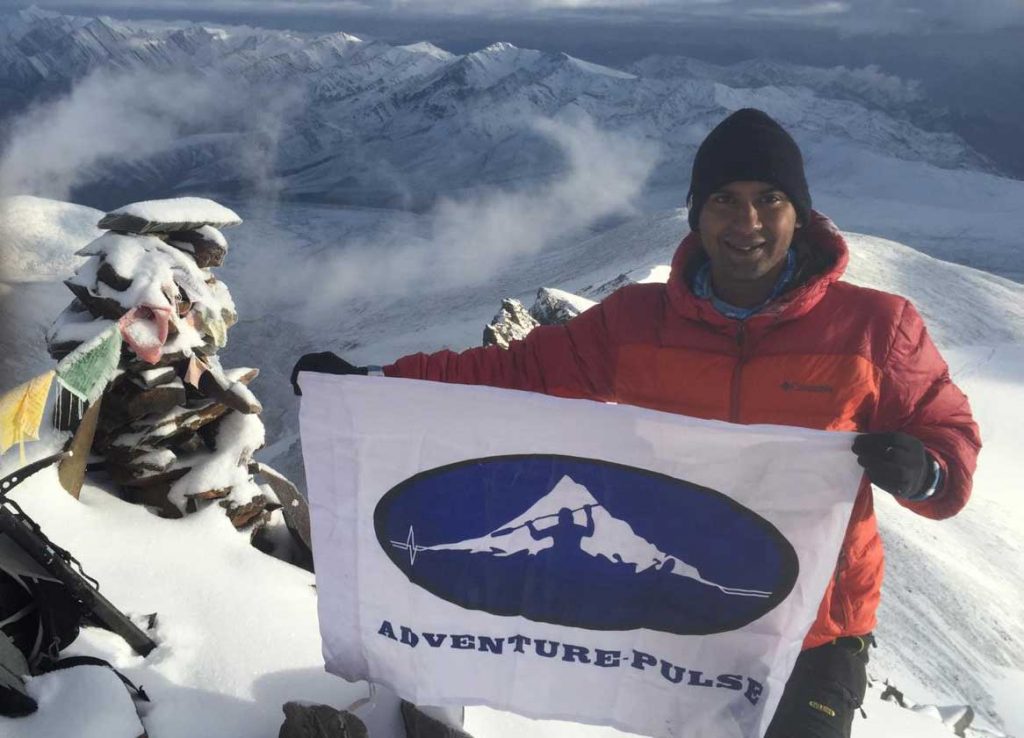
Another 30 minutes of climbing and the summit was in sight. By 7.30 am, we were at the summit and the feeling was exhilarating. It was just the four of us on the summit and a beautiful weather day; a dream come true for a mountaineer. We all took our set of pictures and started heading down. We knew with the rising sun, the snow will become softer making it more difficult for us to walk.
Homecoming – The return to Leh
Exhausted and dehydrated, we reached back our camp in about 4 hours and decided to pack and continue down to Nimaling. It was a tough day, but by afternoon, we were back at Nimaling having done one of the fastest & most exciting climbs Samir & I would’ve done in many years. After a good night’s sleep at Nimaling, we started our long walk back to Chokdo over the Kongmarula pass. Most people we met and spoke to, refuse to believe that we had been out only 4 days and had finished climbing a 6000-meter peak and had already returned.
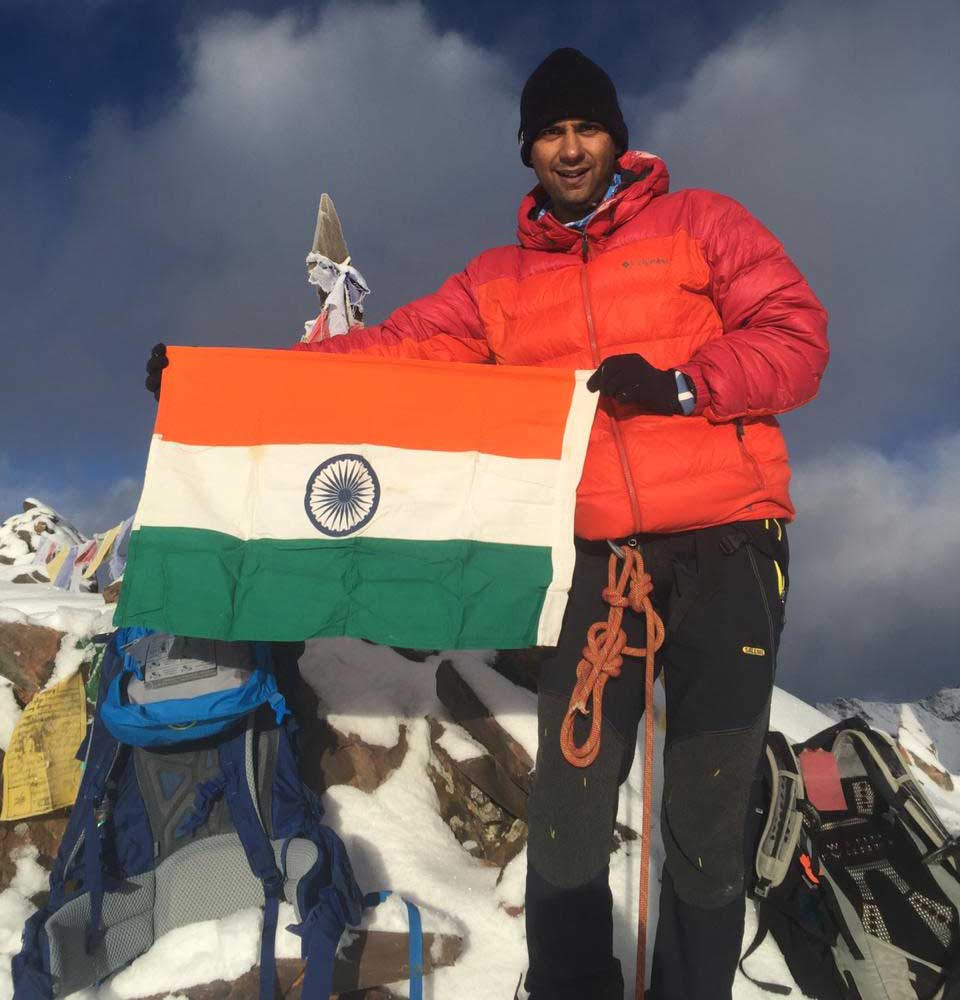
Dzo Jongo towering high at 6128 meters is a semi-technical climb which is not very frequent. Its located not very far from Nimaling and is an excellent option for climbers wanting to climb a less crowded 6000-meter peak. At Adventure-Pulse, we now regularly do climbs to Dzo Jongo and would highly recommend this peak to anyone wanting to make a transition from trekking to climbing. Besides, it gives you the rare opportunity to experience a true climbing adventure.

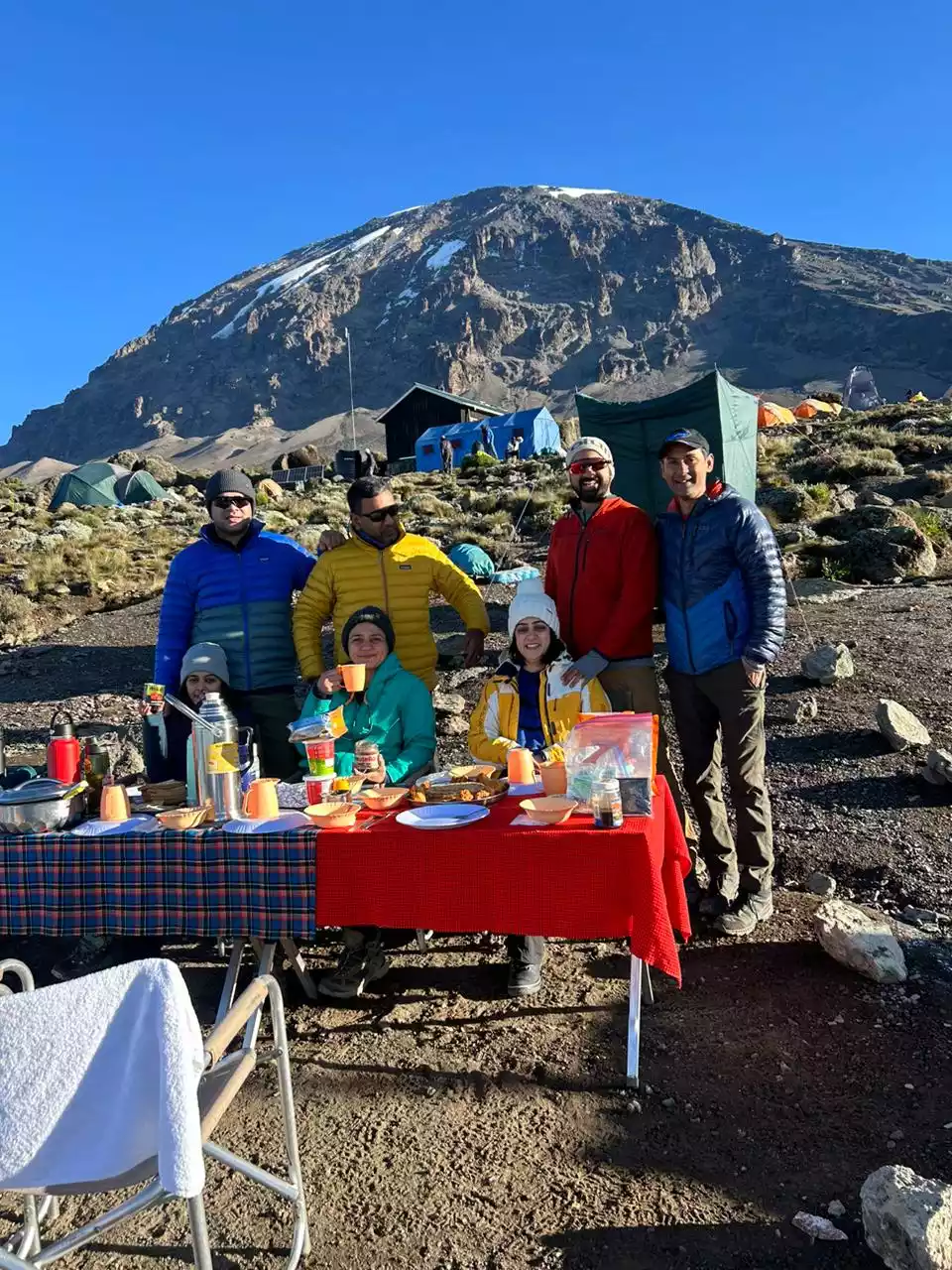
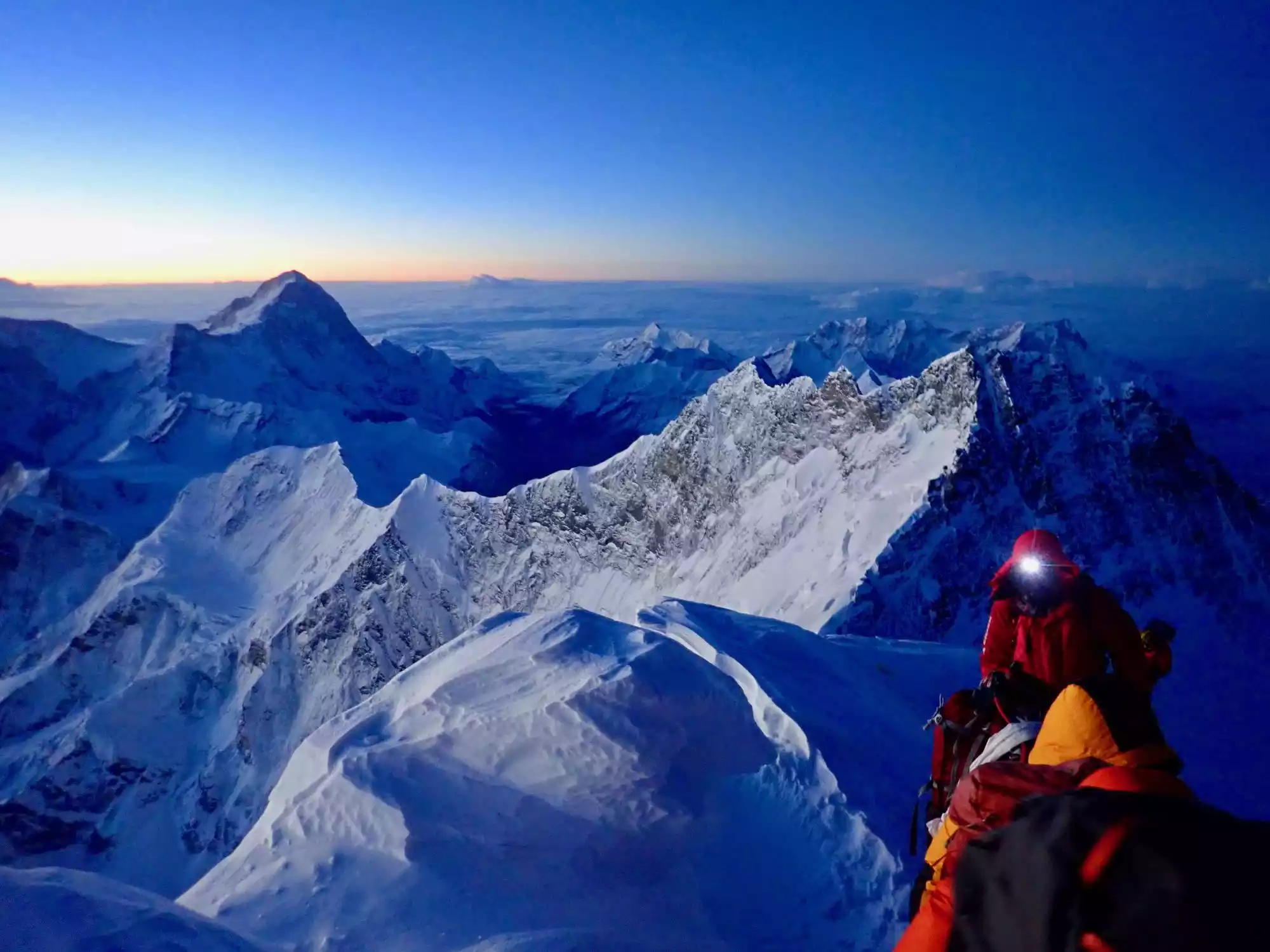
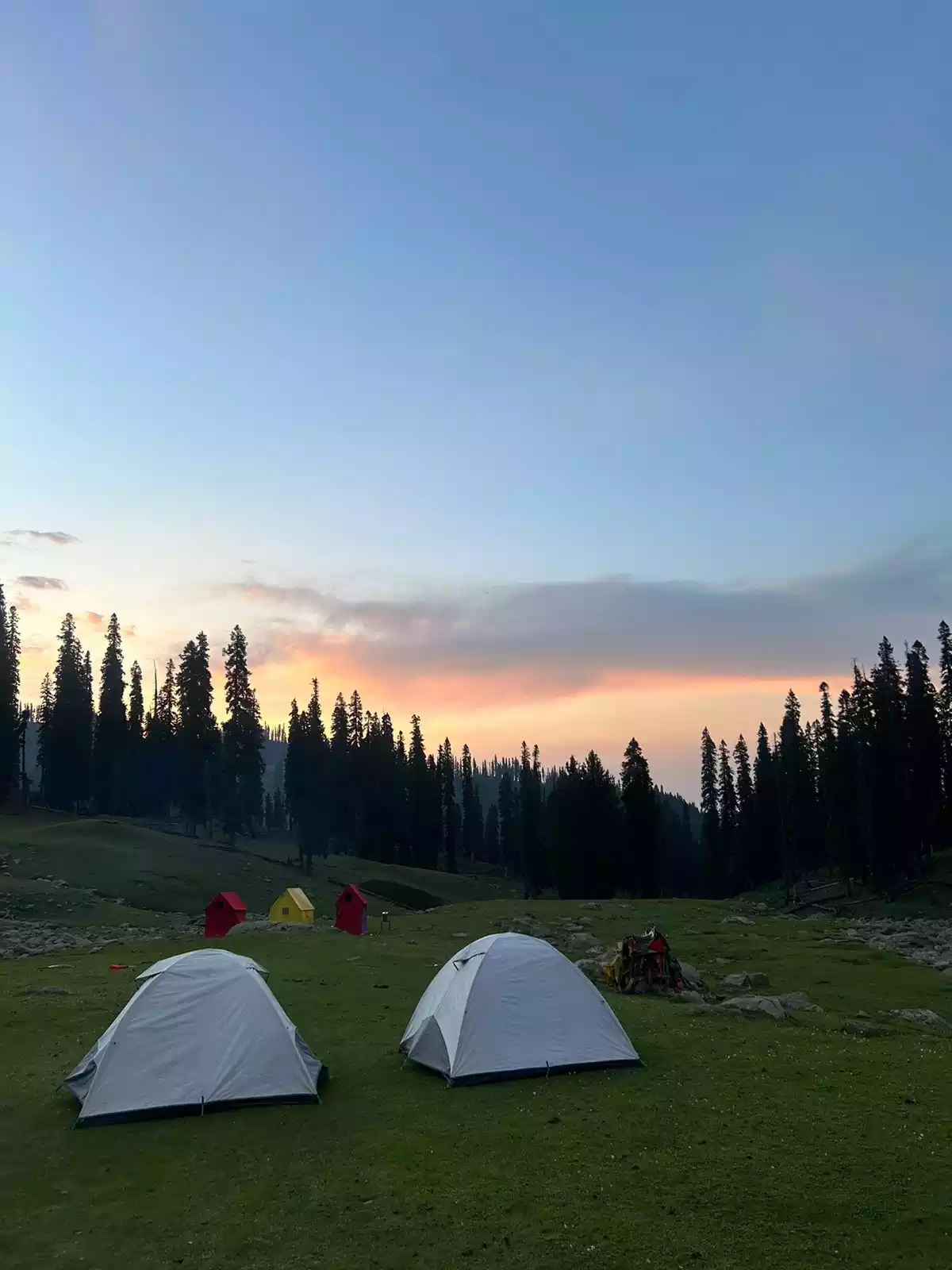
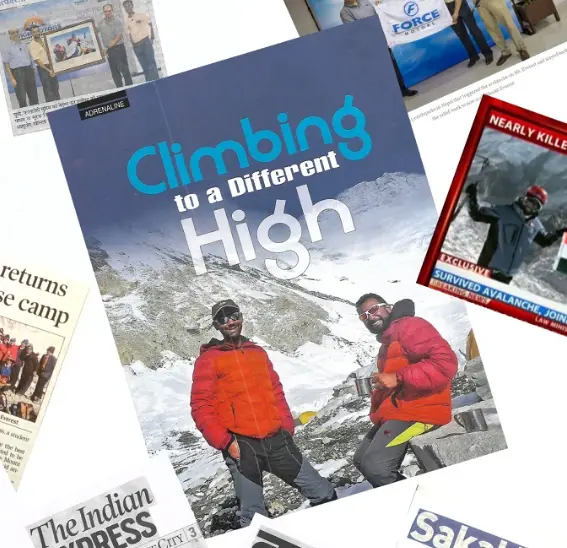
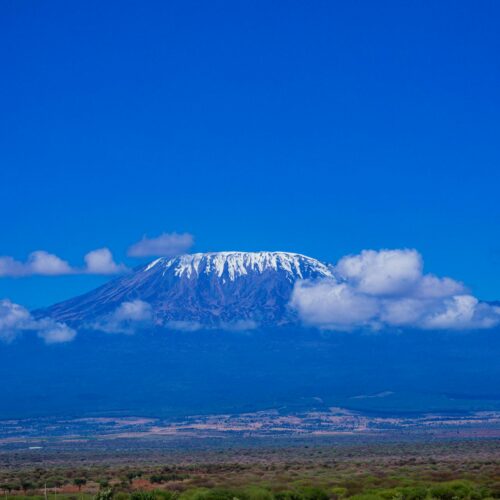


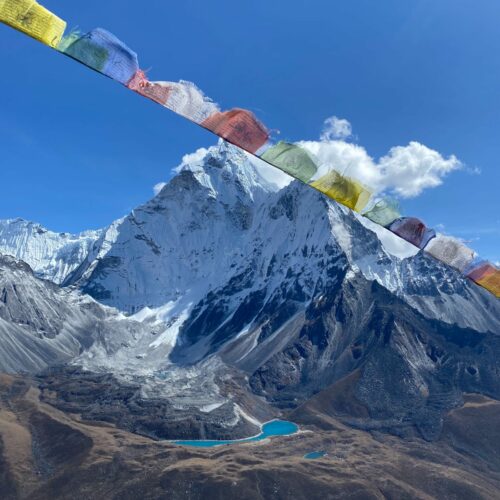



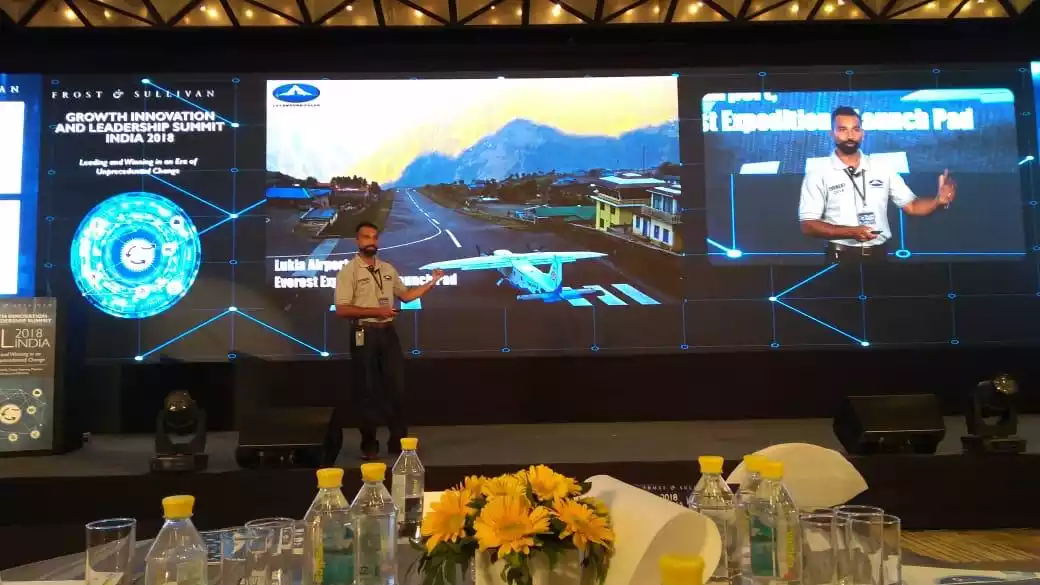
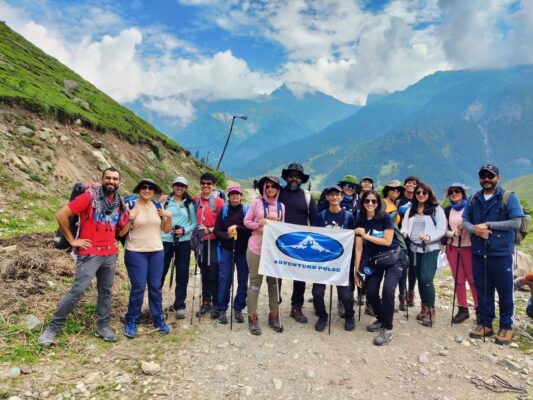
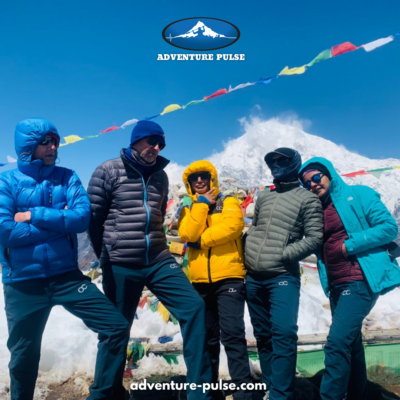
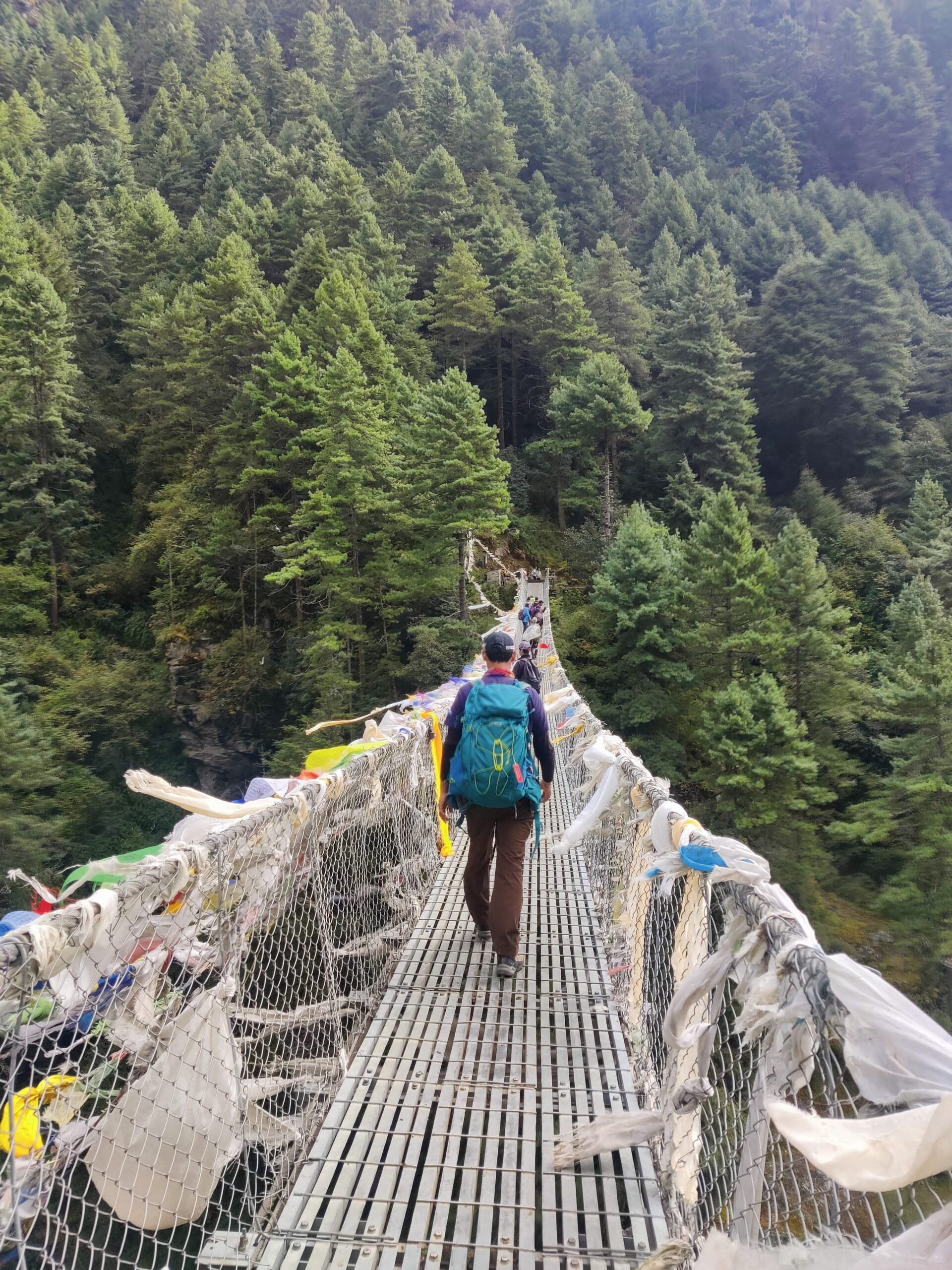
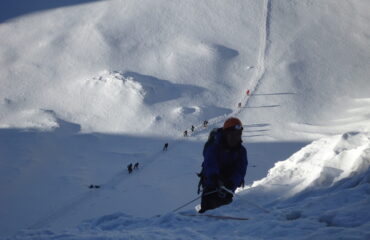
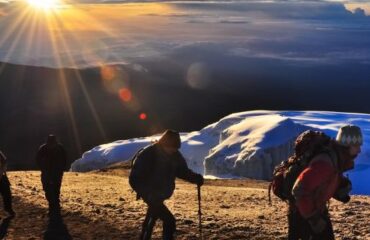
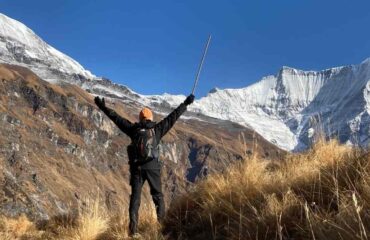
Thanks for sharing your knowledge with us. I came through this blog by chance and found this great and useful content on and its beauty and challenges. I will be updated through your blog. Keep sharing!
Congrats for your achievement. Very informative blog. I am planning to go for this peak.